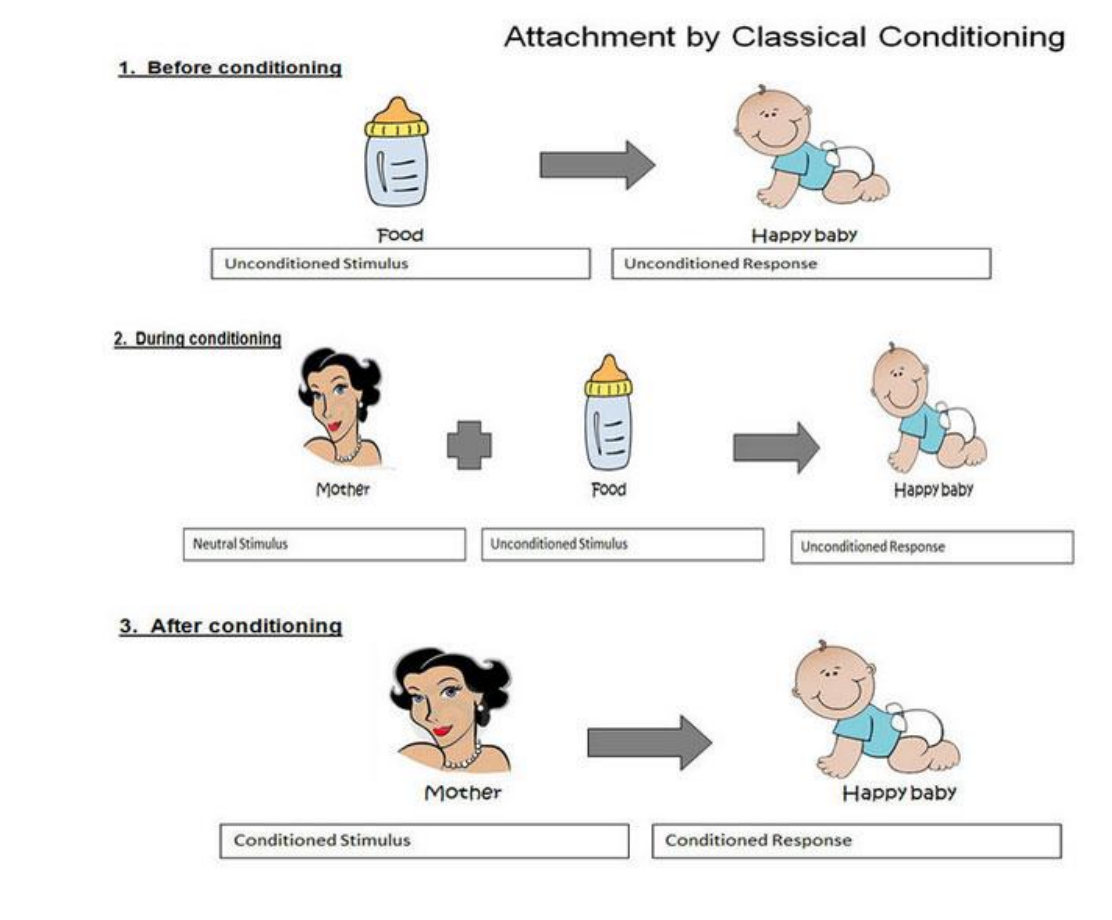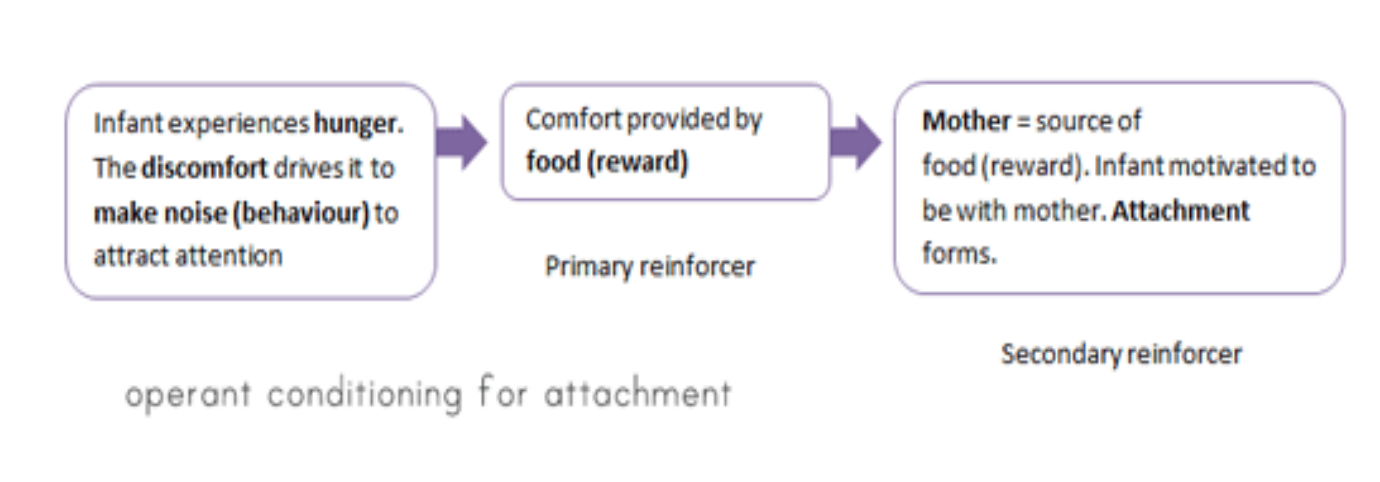Learning theory as an explanation of attachment
1/12
There's no tags or description
Looks like no tags are added yet.
Name | Mastery | Learn | Test | Matching | Spaced |
|---|
No study sessions yet.
13 Terms
What side of the debate nature vs nurture is the learning theory of attachment on?
nurture
What is the learning theory of attachment also referred to as?
cupboard love
What is the learning theory of attachment?
infants learn and maintain attachments in their environment
What do behaviourists suggest that behaviour is learned through?
classical or operant conditioning
What its attachment by classical conditioning?
caregiver is associated with food- this is how we form an attachment

What Is attachment by operant conditioning?

What types of learning is classical conditioning?
learning by association.
What types of learning is operant conditioning?
learning by consequences
What is the explanation of learning by classical conditioning in words?
the child learns to associate the carer with food (unconditional stimulus) which is associated with pleasure
at the start the carer is a neutral stimulus (a stimulus that produces no response)
over time, when the carer regularly feeds the child, they become associated with food and become a conditioned stimulus which evokes pleasure
What is the explanation of learning by operant conditioning in words?
if a behaviour results in agreeable consequences it is likely to be repeated and if it results in disagreeable consequences it is likely to decline
if crying results in feeding, then the consequences are pleasant and crying is reinforces
escaping from an unpleasant stimulus is also agreeable so it is a reinforcer
most carers dislike hearing a baby cry so the cessation of crying is a negative reinforcer encouraging the carer to behave in such a way that the child stops crying
smiling by the child is very rewarding and is therefore a positive reinforcer so the carer behaves in a way to evoke the smiling
Evaluation of learning theory: counter evidence from animal studies
Harlow’s monkeys showed attachment behaviours towards the soft surrogate mother in preference to the wire mother with food.
This shows that other factors other then association with food are important in the formation of attachment.
This reduces the validity of learning theory in explaining an attachment,
Evaluation of learning theory: counter evidence from human studies
Chauffeur found that infants tended to form their main attachments with their mother, regardless of whether she was the one that usually fed them, only 3% of infants attach to the father first.
This suggests there may be other reasons for forming an attachment.
Evaluation of learning theory: nature vs nurture debate
Nurture
Learning theory explains attachment almost entirely through nurture, proposing that infants form bonds because feeding is reinforced via classical and operant conditioning, not biological forces
while the specific attachment figure may be influenced by environmental learning, the overall capacity and motivation to attach are better explained by an interactionist approach, recognising that both innate predispositions and learning experiences shape attachment